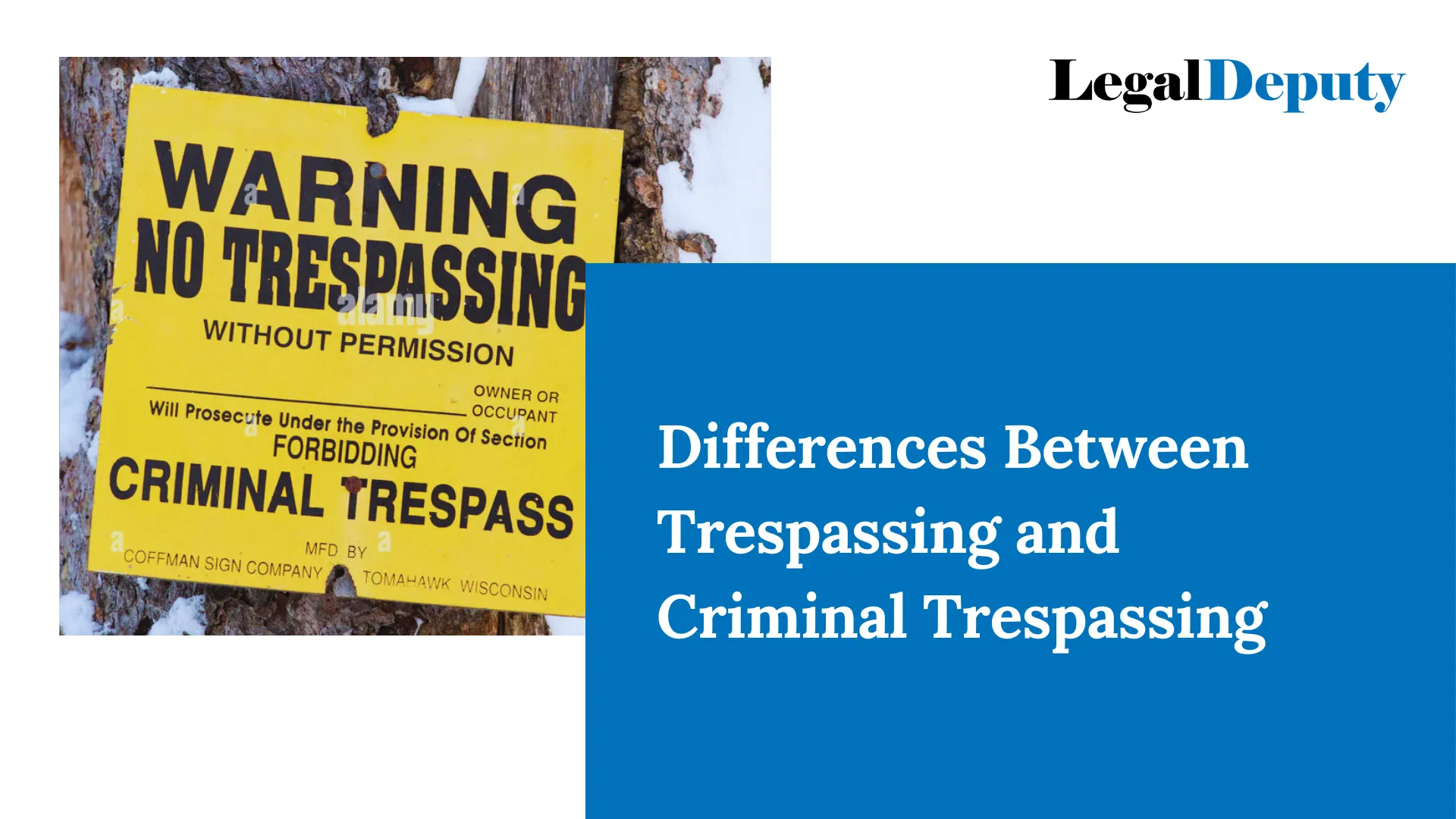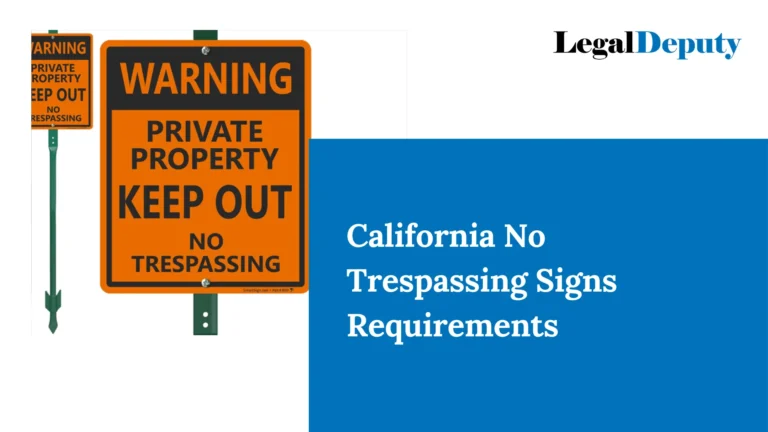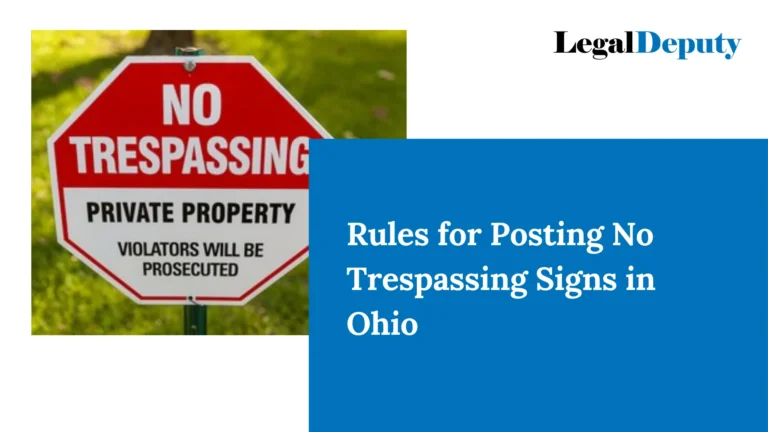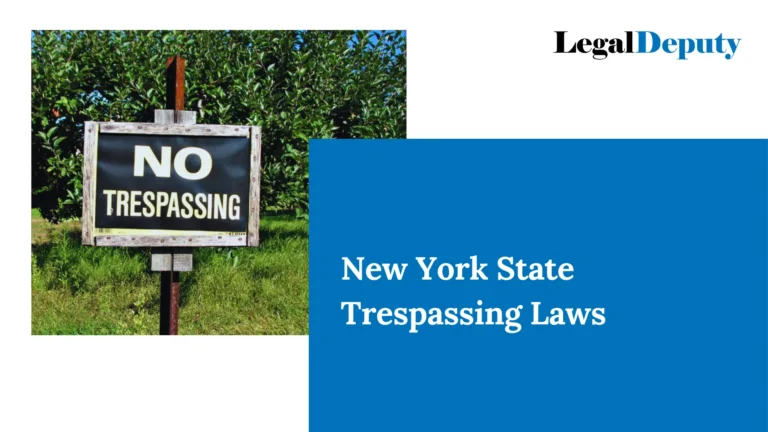Difference Between Trespassing and Criminal Trespassing – All You Need To Know
Navigating the intricate labyrinth of legal definitions can be daunting, especially when it comes to trespassing and criminal trespassing. Imagine this: you innocently explore a seemingly abandoned property, only to find yourself entangled in legal complexities.
Understanding the subtle yet critical distinctions between trespassing and criminal trespassing is more than an exercise in legal jargon; it’s a shield against unintentional missteps with potentially severe consequences.
In this guide, we embark on a journey to demystify these legal terms, shedding light on the nuanced differences, potential penalties, and offering practical insights to safeguard against unwitting legal pitfalls.
Whether you’re a property owner seeking to protect your premises or an individual aiming to tread cautiously, this exploration of the legal landscape is your key to informed decision-making. Let’s unravel the legal tapestry and empower ourselves with the knowledge needed to navigate property boundaries with confidence and clarity.
Trespassing Defined
Trespassing, at its core, revolves around the unauthorized entry onto someone else’s property. In the eyes of the law, this could range from stepping onto a neighbor’s backyard without permission to wandering into a commercial space without lawful authorization.
The legal definition of trespassing often hinges on the infringement of a property owner’s right to exclusive possession. Picture this scenario: you decide to take a shortcut through a private property, assuming it’s a harmless act. However, even seemingly innocent actions like crossing a clearly marked boundary can have legal ramifications.
Elements that Constitute Trespassing
To fully grasp trespassing, it’s essential to recognize its key elements. These typically include knowingly entering someone else’s property without permission, staying on the premises without lawful justification, or refusing to leave when asked to do so by the property owner. It’s crucial to note that intent plays a significant role in trespassing charges – unintentional actions may still lead to legal consequences.
Whether you’re a property owner seeking to protect your land or an individual unintentionally crossing boundaries, understanding the fundamental elements of trespassing is the first step toward legal clarity.
Examples of Common Trespassing Scenarios
Trespassing situations come in various forms, each highlighting the need for a nuanced understanding of property rights. From entering posted private property to disregarding clear “no trespassing” signs, the scenarios are as diverse as the landscapes they occur in.
For instance, exploring an abandoned building, assuming it’s public space, may constitute trespassing if the property is privately owned. By examining these common scenarios, we can better appreciate the breadth of actions that fall under the umbrella of trespassing and the potential legal consequences they carry.
In our exploration of trespassing, we lay the foundation for distinguishing it from its more serious counterpart, criminal trespassing. Understanding these nuances is not just a legal exercise; it’s an essential guide for individuals and property owners alike, offering clarity in an often perplexing legal landscape.
Criminal Trespassing Defined
While trespassing explores the boundaries of property rights, criminal trespassing elevates the stakes by transforming what may seem like a mere transgression into a legal offense. Criminal trespassing occurs when an individual knowingly and unlawfully enters or remains on another person’s property, with the added element of intent to commit a crime or cause harm. In essence, it’s trespassing with an escalated level of severity, emphasizing not just the act of entering, but the potential criminal motives behind it.
Factors that Elevate Trespassing to Criminal Trespassing
Understanding criminal trespassing involves recognizing the factors that transform a simple trespass into a criminal act. This often includes the intent to commit a crime while on the premises, such as theft, vandalism, or harassment. In legal terms, it’s not just about where you are, but why you are there. The element of intent adds a layer of complexity, making it crucial to decipher whether an individual’s presence on the property goes beyond a mere accidental or innocent incursion.
Examples of Situations Leading to Criminal Trespassing Charges
Imagine entering a building after hours, not realizing it’s private property, only to be charged with criminal trespassing due to suspicions of burglary. Situations like these underscore the importance of distinguishing between unintentional trespassing and criminal trespassing. Other scenarios may involve entering a property with the intention to disrupt activities, engage in illegal activities, or cause harm. By delving into these examples, we gain insight into the multifaceted nature of criminal trespassing and the diverse circumstances that may lead to such charges.
In essence, criminal trespassing embodies a heightened level of legal consequence, emphasizing not only the intrusion onto another’s property but also the potential threat it poses. As we unravel the intricacies of criminal trespassing, we equip ourselves with the knowledge needed to navigate the legal landscape responsibly and avoid unintended legal entanglements.
Key Differences Between Trespassing and Criminal Trespassing
Understanding the distinctions between trespassing and criminal trespassing is pivotal for anyone navigating the legal terrain. These differences go beyond the surface, delving into the intent, severity, and consequences associated with each.
A. Intent and State of Mind
One of the primary divergences lies in the intent behind the intrusion onto another’s property. Trespassing may occur unintentionally, such as crossing a boundary without realizing it’s private property. In contrast, criminal trespassing requires a willful intent to commit a crime or cause harm while on the premises. This element of intent becomes a crucial factor in determining the nature and severity of the offense.
Consider this analogy: unintentional trespassing is like accidentally crossing into someone’s yard, not realizing there’s a fence. Criminal trespassing, on the other hand, is akin to purposefully entering with the intent to steal or vandalize. Understanding the mental state behind the act helps demystify the nuances between these two legal categories.
B. Severity of Consequences
The repercussions of trespassing versus criminal trespassing differ significantly. Trespassing is often considered a civil offense, leading to potential legal actions such as fines or orders to leave the premises. In contrast, criminal trespassing is a criminal offense, carrying more severe consequences, including fines and the possibility of imprisonment. Recognizing the gravity of these consequences underscores the importance of distinguishing between the two, as unintentional actions could unexpectedly escalate to criminal charges.
To put it plainly, the severity of consequences acts as a compass, guiding individuals and property owners alike through the legal implications of each category.
C. Possible Defenses Against Each Charge
When faced with trespassing charges, whether civil or criminal, understanding potential defenses becomes essential. For trespassing, defenses may include lack of intent, absence of clear notice, or permission granted by the property owner. Criminal trespassing, on the other hand, demands a more nuanced approach, often involving proving the absence of criminal intent or demonstrating that the alleged actions do not meet the criteria for the charge.
Think of it as building a legal defense fortress: for trespassing, you may reinforce it with unintentional entry or lack of clear warnings; for criminal trespassing, the defense may involve challenging the alleged criminal intent. Recognizing the unique defenses for each charge is akin to having a legal toolkit, providing individuals with the means to safeguard their rights.
In summary, the key differences between trespassing and criminal trespassing extend beyond legal technicalities, delving into the realms of intent, consequences, and possible defenses. By unraveling these distinctions, individuals can navigate the legal landscape with clarity, ensuring that they are equipped to address the specific nature of the charges they may face.
Penalties for Trespassing and Criminal Trespassing
Understanding the potential penalties associated with trespassing and criminal trespassing is crucial for individuals and property owners alike. The consequences vary in severity, reflecting the gravity of each offense.
A. Overview of Potential Fines
For trespassing, the penalties often begin with fines. Individuals found guilty of unauthorized entry onto private property may face financial repercussions, the extent of which depends on factors such as the nature of the trespass and local jurisdiction. These fines serve as a reminder that even seemingly minor infractions can have tangible financial consequences.
Picture this: someone unknowingly crosses into a restricted area, only to find themselves facing a hefty fine. The financial impact underscores the importance of respecting property boundaries and seeking legal advice when in doubt.
B. Possible Jail Time for Criminal Trespassing
Criminal trespassing, being a criminal offense, introduces the possibility of more severe consequences, including imprisonment. Offenders may find themselves facing not just fines but also a potential stint behind bars. This escalation in penalties emphasizes the seriousness with which the legal system views intentional and criminal acts of trespassing.
Consider this scenario: an individual, charged with criminal trespassing due to malicious intent while on another’s property, faces the daunting prospect of imprisonment. The human element in this situation reminds us that legal consequences extend beyond financial burdens to impact personal freedom.
C. Variations in Penalties Based on Jurisdiction
It’s essential to recognize that penalties for trespassing and criminal trespassing can vary based on jurisdiction. Local laws play a significant role in determining the specific consequences individuals may face. Some areas may have stricter penalties, while others may offer more lenient outcomes. Understanding these variations becomes crucial for individuals navigating the legal landscape, emphasizing the need for localized legal advice.
Imagine a situation where the penalties for trespassing differ between neighboring states. The awareness of jurisdictional nuances serves as a compass, guiding individuals to comprehend the potential legal consequences specific to their location.
In essence, the penalties for trespassing and criminal trespassing are not merely abstract legal concepts but tangible repercussions that individuals may face. By humanizing these consequences, we underscore the real-life impact that legal actions can have on individuals, emphasizing the importance of informed decision-making and a clear understanding of the potential penalties involved.
Legal Consequences and Records
The legal aftermath of trespassing or criminal trespassing reaches beyond fines and potential imprisonment, leaving a lasting impact on individuals’ records and, consequently, their lives. Understanding these consequences is crucial for anyone navigating the complexities of property rights and legal boundaries.
A. Impact on Criminal Record
Trespassing incidents, especially when escalated to criminal trespassing, can lead to a stain on an individual’s criminal record. This record serves as a lasting testament to the legal misstep, potentially affecting employment opportunities, housing applications, and other facets of life. A seemingly innocent act of wandering onto private property can, unfortunately, cast a shadow on one’s record.
Imagine an individual who, unaware of the legal complexities, trespasses with no criminal intent. However, if charged with criminal trespassing, the resulting mark on their record becomes a tangible reminder of the legal consequences. This human element underscores the real-world implications that extend beyond the courtroom.
B. Long-Term Consequences for Employment and Housing
The repercussions of a trespassing charge can extend to various aspects of life, notably employment and housing. Many employers and landlords conduct background checks, and a criminal record, even for a seemingly minor offense, may influence their decisions. This reality adds an extra layer of significance to understanding the potential legal consequences of trespassing.
Consider a scenario where an individual, previously charged with criminal trespassing, seeks employment or housing. The awareness that a single legal misstep can impact their livelihood and living situation highlights the need for proactive legal awareness and strategic decision-making.
C. Ways to Mitigate or Expunge Trespassing-Related Offenses
Fortunately, there are avenues for mitigating the impact of trespassing-related offenses on one’s record. Seeking legal advice and understanding the options available for expungement or record sealing is a crucial step in the post-legal process. Some jurisdictions offer opportunities to clear records after fulfilling certain conditions, providing individuals with a chance to move forward without the burden of a stained record.
In essence, the legal consequences of trespassing go beyond immediate fines and potential jail time, touching upon the very fabric of individuals’ lives. By recognizing the long-term impact on records and personal opportunities, individuals can make informed decisions and take proactive steps to mitigate the repercussions of legal missteps.
Prevention and Avoidance
The old adage “an ounce of prevention is worth a pound of cure” rings especially true when it comes to trespassing. Whether you’re a property owner seeking to protect your land or an individual navigating unfamiliar territory, taking proactive steps to prevent and avoid trespassing incidents can save you from the legal quagmire that may follow.
A. Tips for Property Owners to Deter Trespassers
Clear Signage and Fencing: Clearly mark the boundaries of your property with visible signs, indicating private property and any restrictions. Fencing can act as a physical deterrent, signaling to potential trespassers that the area is off-limits.
Regular Property Inspections: Conduct regular inspections of your property to identify and address vulnerable points. Promptly repair broken fences or address any potential areas where individuals might inadvertently enter.
Security Measures: Consider installing security cameras or lighting in strategic areas. These not only serve as deterrents but also provide valuable evidence in the event of a trespassing incident.
Communication with Neighbors: Establish open lines of communication with neighboring property owners. Sharing information about potential trespassing issues can create a supportive community environment focused on protecting everyone’s interests.
B. Advice for Individuals to Avoid Unintentional Trespassing
Be Mindful of Surroundings: Pay attention to your surroundings and be aware of property boundaries. If an area seems private or restricted, err on the side of caution and avoid entering without explicit permission.
Follow Posted Signs: Respect posted signs indicating private property or areas off-limits to the public. These signs are crucial indicators of the property owner’s expectations.
Seek Permission: If in doubt about whether an area is private, seek permission from the property owner before entering. Taking a moment to inquire can prevent unintentional trespassing incidents.
Educate Yourself on Local Laws: Familiarize yourself with local trespassing laws and regulations. Understanding the legal landscape in your area can empower you to make informed decisions and avoid unintentional legal missteps.
By humanizing these preventative measures, we recognize that both property owners and individuals share a common goal: to navigate the world around them respectfully and responsibly. Proactive steps not only protect property rights but also contribute to the creation of a community where everyone can coexist harmoniously.
In our exploration of trespassing and criminal trespassing, the emphasis on prevention and avoidance serves as a beacon of practical guidance, reminding us that legal entanglements can often be sidestepped with awareness, communication, and a shared commitment to respecting boundaries.
Conclusion
In unraveling the complexities of trespassing and criminal trespassing, we’ve journeyed through the nuances that distinguish legal missteps from intentional acts. This exploration serves as a beacon, guiding individuals and property owners toward informed decision-making in the realm of property rights.
As you navigate this legal landscape, remember that understanding the subtle differences, potential consequences, and preventative measures is not just a legal exercise – it’s a key to fostering a community where boundaries are respected.
Whether you’re safeguarding your property or ensuring responsible exploration, the importance of legal awareness cannot be overstated. Trespassing incidents, though multifaceted, can often be mitigated through proactive steps and mutual understanding.
Empower yourself with knowledge, communicate openly with neighbors, and always seek permission when in doubt. By embracing these principles, we contribute to a society where legal complexities give way to a shared commitment to respecting one another’s spaces.
Let this exploration be a reminder: in the tapestry of property rights, clarity and respect form the threads that weave a harmonious community.
Disclaimer
The information provided on this blog is intended for general informational purposes only and should not be construed as legal advice. While we strive to ensure the accuracy and timeliness of the content, legal situations and interpretations may vary, and the information presented may not be applicable to your specific circumstances.
No attorney-client relationship is formed by accessing or using the information on this blog. If you require legal advice or representation, it is recommended that you consult with a qualified attorney who can provide advice tailored to your individual situation. Reliance on any information provided on this blog is solely at your own risk.
The blog may contain links to external websites or resources; these are provided for convenience and do not imply endorsement. We do not guarantee the accuracy, completeness, or reliability of third-party content. By accessing and using this blog, you acknowledge and agree to the terms of this disclaimer. Any updates or changes to the disclaimer will be posted here.
Remember, laws and legal interpretations can change, and the information on this blog may not be current or accurate at the time of your reading. Always seek professional legal advice for your specific situation.







